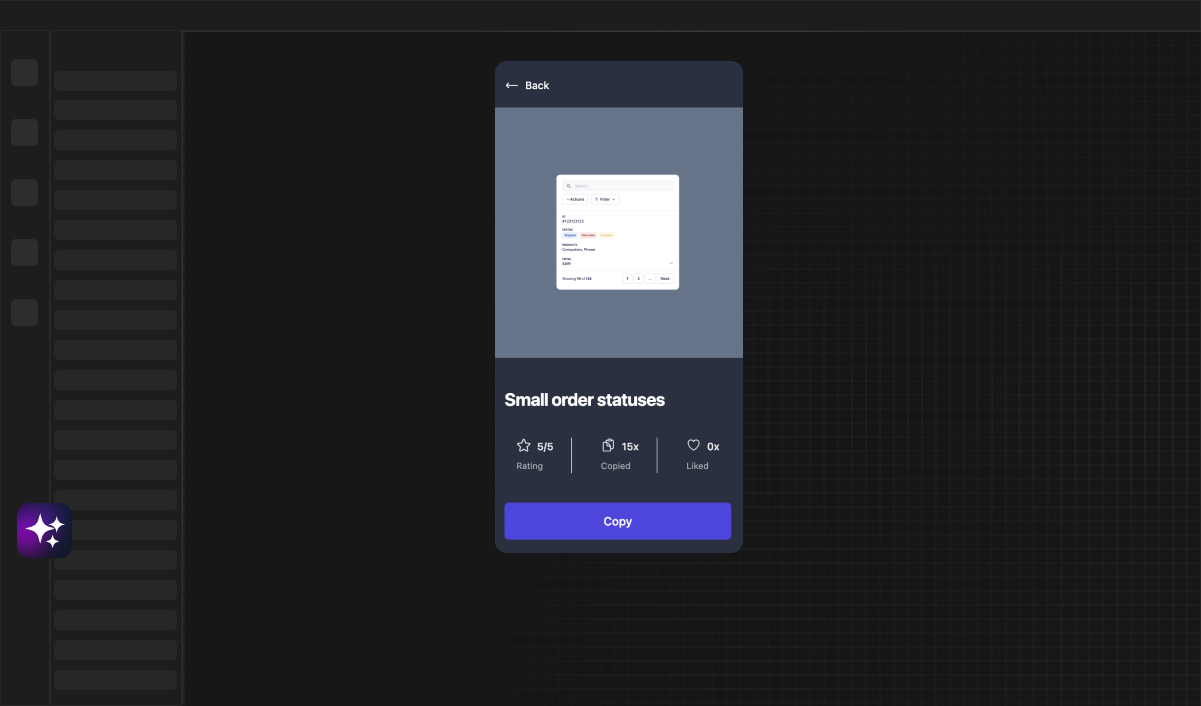
Web Developer
Guide to Workflow Units in Bubble | Choosing the Right Plan
Discover the ins and outs of Workflow Units in Bubble and learn how to choose the right plan for your project. Our guide covers everything from assessing your needs to optimizing usage, ensuring your Bubble application runs smoothly without breaking the bank.
Introduction to Workflow Units in Bubble
Welcome to the world of Bubble, where building web applications is accessible to developers and non-developers alike. At the heart of Bubble's power are workflow units, the gears that keep your applications running smoothly. If you're new to Bubble or looking to understand how workflow units play a crucial role in your app, you've come to the right place.
Understanding workflow units is essential for anyone who wants to use Bubble effectively. Workflow units are measures of server capacity used every time an action is taken in your app that requires server-side logic. The more complex your app becomes, the more workflow units you'll need. This blog post will guide you through the ins and outs of workflow units in Bubble and help you decide which plan best fits your needs.
Understanding the Role of Workflow Units
Workflow units in Bubble are a bit like fuel for your car. Just as a car needs gas to move, your Bubble application needs workflow units to run its features and processes. Each time a user performs an action that triggers a workflow, such as signing up, submitting a form, or updating a record, your app consumes a certain amount of these units.
The number of workflow units you need can vary greatly depending on the complexity of your app and the number of users interacting with it. For small projects or applications with light server-side processing, you may not need many workflow units. However, as your user base grows and your application becomes more complex, the importance of understanding and managing your workflow units becomes paramount.
How Workflow Units Impact Your Bubble Application's Performance
Workflow units directly impact your Bubble application's performance. If you run out of these units, your app can slow down or, in some cases, cease to work until more units are available. That's why it's crucial to monitor your usage and understand how much your app consumes on a regular basis.
Moreover, efficient use of workflow units can not only help your app run more smoothly but also save you money. Being strategic with how your app is designed and how workflows are triggered can lead to a more economical consumption of these units, which becomes increasingly important as your app scales up.
Evaluating Your Project Needs: Workflow Units Considered
Before diving into Bubble’s plans and deciding which one to choose, you need to evaluate your project needs carefully. Workflow units are a key resource, and understanding your application's requirements will help you make an informed decision. Let's discuss how to assess the demand for workflow units in your Bubble app and consider the implications of project size and complexity.
Assessing the Demand for Workflow Units in Your Bubble App
To accurately assess the demand for workflow units, start by looking at your app's processes. Identify which actions are performed frequently and the workflow units they consume. Keep an eye on user behavior, as this will dictate the frequency and intensity of workflow unit usage. If your app includes features like real-time updates or complex data processing, you'll likely need more units.
Tracking peak usage times and planning for them can also help ensure that you have enough workflow units to support your application. During development, simulate user interactions to get an estimate of the units each type of interaction will consume. This foresight can be invaluable for maintaining a seamless user experience as your app grows.
Project Size and Complexity: Key Factors for Workflow Unit Planning
The size and complexity of your Bubble project are crucial factors that impact the number of workflow units you'll need. A simple app with a few users might run perfectly on a lower-tier plan with fewer units, while a complex enterprise application with thousands of users will require a robust plan with a higher workflow unit cap.
When planning for workflow units, consider not only the current state of your app but also where it's headed. Are you planning to add more features or expecting a surge in user numbers? If so, it's wise to choose a plan that can accommodate that growth. Keep scalability in mind – it's better to have a cushion of extra units than to be caught short when your app starts to take off.
A Deep Dive into Bubble's Plan Offerings
Bubble offers various plans, each with a different allocation of workflow units to suit diverse project needs. From free plans aimed at hobbyists to professional-grade options for businesses, there's a range of choices available. In the following sections, we'll compare these plans and help you determine which one aligns best with your workflow needs.
Comparing Bubble Plans: Workflow Units Availability
Bubble’s plans, from the free tier to the dedicated options, each offer a different amount of workflow units. The "Hobby" plan, for instance, is great for testing the waters and small personal projects, but it provides limited workflow units. As you move up to "Personal" and "Professional" plans, you'll see an increase in the number of units available, designed to accommodate more users and complex functionalities.
For heavy-duty applications, the "Production" and "Enterprise" plans offer a significantly higher number of workflow units as well as priority support and scalability options. These plans are geared towards businesses that require reliable performance under high demand. It's important to review each plan's details and understand how many units you get, as well as the cost of additional units, should you exceed your limit.
From Hobby to Production: Choosing the Right Plan for Your Workflow Needs
Deciding on the right plan for your workflow needs comes down to balancing the scale of your project with your budget. If you're just starting out or working on a personal project, the "Hobby" plan might be sufficient. However, for startups or businesses expecting to grow, investing in a higher-tier plan from the beginning can save time and headaches later on.
Consider not only your immediate needs but also your long-term goals. It may be more cost-effective to choose a plan with room to grow into rather than upgrading multiple times as your needs increase. Take the time to project your workflow unit consumption over the next few months or even years to ensure your chosen plan will continue to suffice.
Optimizing Your Workflow Units
Once you've chosen a plan, it's important to optimize your use of workflow units. This means getting the most out of every unit and avoiding unnecessary consumption. Let's explore some best practices for efficient workflow unit usage and techniques to keep your consumption under control.
Best Practices for Efficient Workflow Unit Usage
The best way to efficiently use your workflow units is by optimizing your workflows. Look for ways to streamline your processes by combining actions or eliminating redundancies. Often, workflows can be simplified without affecting the app’s functionality, resulting in a more efficient use of units.
Another practice is to manage scheduled workflows effectively. These can consume a significant number of units if not handled carefully. Be strategic about how often these workflows run and what actions they perform. Caching data and using client-side logic when possible can also reduce the demand on workflow units.
Techniques to Reduce Workflow Unit Consumption
To further reduce your app's workflow unit consumption, consider implementing techniques such as data pagination or lazy loading, which can limit the server-side processing required for displaying data. Also, encourage users to complete actions in batches when feasible, as this can decrease the number of workflows triggered.
Regularly monitor your app's usage metrics to identify any bottlenecks or spikes in workflow unit consumption. This will help you address issues promptly and adjust your strategies as necessary. By staying vigilant and continually optimizing your use of workflow units, you can ensure your app runs effectively within the constraints of your chosen Bubble plan.
Scaling Your Bubble Application
As your Bubble application gains traction and your user base grows, you'll need to think about scaling. This involves both upgrading your plan to accommodate increased workflow unit demand and implementing strategies to scale efficiently. It's a delicate balance between ensuring performance and managing costs.
When to Upgrade Your Plan for More Workflow Units
Knowing when to upgrade your plan for more workflow units is key to maintaining your app's performance. Look for signs such as consistently hitting your workflow unit limits, experiencing slower response times, or receiving feedback from users about performance issues. These indicators suggest it’s time to consider a higher-tier plan.
Upgrading preemptively can also be a strategic move, especially if you anticipate a surge in users or are planning to roll out significant feature updates. It's better to scale up before these changes take effect to ensure a smooth transition and a consistent user experience.
Strategies for Scaling Up Without Overspending on Workflow Units
Scaling up doesn't always mean you need to overspend on workflow units. One strategy is to refactor your workflows for efficiency before jumping to a higher plan. This can often free up units and delay the need for an upgrade. Another approach is to align your scaling efforts with user growth or revenue increases, so the cost of additional units is offset by the value they bring.
Consider flexible plans or temporary upgrades during periods of expected high usage, such as marketing campaigns or seasonal spikes in activity. This can help you manage costs while still providing the necessary resources for those critical times. Always plan for scaling in stages, so each upgrade is justified by your app's growth and performance needs.
Real-World Examples: Workflow Units in Action
To better understand how workflow units can impact your Bubble application, let's look at some real-world examples. Case studies from startups and successful Bubble applications can provide valuable insights and lessons learned about managing workflow units effectively.
Case Studies: Startups and Their Workflow Units Management
Startups using Bubble often begin with limited resources, making efficient workflow unit management crucial. Many find success by closely monitoring their unit usage and optimizing workflows early on. A common thread among these startups is the practice of streamlining server-side actions and leveraging client-side workflows whenever possible.
By studying the experiences of these startups, it's clear that planning for scalability from the outset is important. Those who anticipate future workflow unit needs are able to make more informed decisions about their plan choices and avoid unexpected performance issues as their user base grows.
Lessons Learned from Successful Bubble Applications
Successful Bubble applications showcase the importance of regular optimization and monitoring. These apps often undergo iterations where workflows are refined, and unnecessary server-side processing is eliminated. It demonstrates that managing workflow units is an ongoing task, not a set-and-forget aspect of app development.
Another lesson is the value of designing with efficiency in mind. Developers of successful Bubble apps tend to prioritize actions that consume less workflow units without compromising on app functionality. This forward-thinking approach lays the foundation for sustainable growth and manageable operational costs.
Making the Decision: Selecting the Best Plan for Your Bubble Application
When it comes time to select the best plan for your Bubble application, there are several considerations to keep in mind. You’ll need to balance cost against functionality and also think about the long-term implications of your choice. Here are some practical tips and long-term considerations to help guide your decision.
Practical Tips for Balancing Cost and Functionality in Bubble
To find the sweet spot between cost and functionality, start by thoroughly understanding what each Bubble plan offers in terms of workflow units and features. Don't pay for a high-tier plan if your usage doesn't justify it, but also don't skimp on the necessary resources needed for your app to function properly.
Take advantage of Bubble's analytics tools to track your workflow unit usage over time. This data will give you a clear picture of your app's needs and help you choose a plan that provides the right amount of units without excessive spending. Remember to factor in potential growth and increased usage when making your decision.
Long-Term Considerations: Future-Proofing Your Workflow Unit Needs
While it’s important to meet your current needs, don't forget to plan for the future. Your app is likely to evolve, and selecting a plan that only meets your immediate requirements might lead to problems down the line. Consider the trajectory of your app and choose a plan that allows for growth and unexpected spikes in usage.
Future-proofing also means staying informed about updates to Bubble's plans and pricing. Keep an eye out for new features or changes that could affect your workflow unit consumption. By keeping your plans flexible and adaptable, you can ensure that you're always in a good position to manage your workflow units effectively.
Final Thoughts and Additional Resources
Workflow units are a vital aspect of building and scaling applications in Bubble. By understanding how they work, assessing your needs, and choosing the right plan, you can set your app up for success. Optimizing workflows and staying proactive in your management will help you avoid performance issues and control costs.
Recap of Key Points to Consider for Workflow Unit Planning
Always start by understanding the role of workflow units in your app’s performance. Evaluate your project's needs carefully, considering both current demands and future growth. Choose a Bubble plan that aligns with these needs and regularly optimize your workflows to ensure efficient usage of the units provided.
Remember that scaling your application should be done thoughtfully, with strategies in place to manage workflow units effectively. Pay attention to real-world examples for insights and lessons that can be applied to your own project.
Where to Find More Information on Bubble Workflow Units and Plans
If you're looking for more information on Bubble workflow units and plans, the Bubble website is a great starting point. They provide detailed breakdowns of each plan and the resources included. Bubble’s user forum and community are also invaluable resources, where you can learn from others’ experiences and ask for advice.
Additional tools and guides can be found on Framify.io, a leading component library for Bubble. Framify.io not only offers components but also a plethora of automations that can help you manage workflow units more effectively. With these resources at your disposal, you're well on your way to mastering the use of workflow units in your Bubble application.



